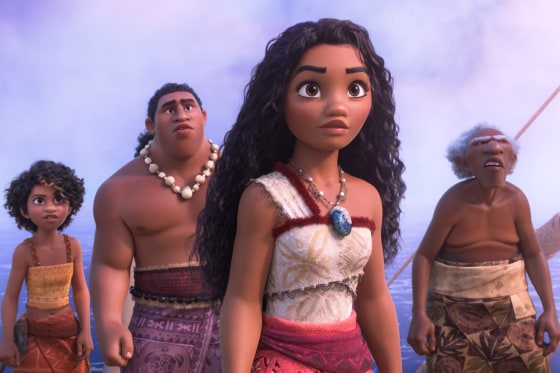
In the process of making history, Moana 2 is sailing to theaters.
In addition to its English version, the film is the first Disney animated film to be released in an Indigenous language.
Moana 2 Reo M ori, which will have voiceovers in the native Polynesian language, will be a special release in New Zealand theaters on Thursday to coincide with the Wednesday worldwide debut.
The translation of the title is “Moana 2 M ori language.” Some people just call the language “te reo” or “reo M ori.”
In addition to Moana 2, Three years later, Reo M ori reunites Moana with Maui for a new sailing adventure after she has got an unexpected call from her navigational ancestors.
Both the first and second translations include Tair whiti, one of the many M ori dialects, and the original Moana was also translated into M ori.
I come from that tribe. According to director Tweedie Waititi, it’s also seaside. Given that we are sea creatures, that seems sense. The water is our home, our neighbor, and we are inextricably linked to it.
According to Waititi, she took great care when preparing a traditional M ori dance, or haka, for the film. Following a performance by M ori legislators in the New Zealand Parliament to oppose a planned policy pertaining to Indigenous people, Thehaka recently went viral.
I guess we’re now going through some really difficult times with our language and culture. According to Waititi, haka is how we express ourselves.
A group of cultural specialists led by Waititi assisted filmmakers in making Moana. In order to guarantee that the region was appropriately portrayed, Disney’s creative team researched Polynesian culture and assembled a group of Pacific Islander cultural specialists.
When you’re adding things like haka and other things, you have to be aware that the entire globe may eventually learn about and possibly do that haka. According to Waititi, you must ensure that people are protected both spiritually and culturally.
Indigenous to New Zealand, or Aotearoa in Māori, are the Māori people. The M ori language remains onUNESCO s Atlas of Endangered Languages. Revitalization efforts have been helpful in ensuring that the language doesn t go extinct, but its long-term future remains uncertain, according to UNESCO.
After dying, our language is returning. I don t think even 10 years back that our elders dreamed that there ll be any Disney films in our language. Now, we re up to six, Waititi said.
In 1972, M ori people worked together to deliver theM ori language petitionto the New Zealand Parliament. The petition, which garnered more than 30,000 signatures, urged the government to offer the M ori language in schools, and implement courses teaching M ori culture and history in schools with larger M ori populations.
This is the full-circle moment we ve been working toward our dream to see te reo M ori normalized on cinema screens alongside English, Matewa Media producers Chelsea Winstanley and Mia Henry-Teirney said in a press release.
Other Disney animated films have been translated into te reo M ori after their English release, such as the original Moana, Coco, The Lion King, Frozen, and, most recently, Encanto. The translated films, as well as Moana 2 Reo M ori, were produced by both Walt Disney Animation Studios and Matewa Media, a New Zealand-based media organization dedicated toM ori storytelling.
Our work aims to honor the legacy of those who fought tirelessly for the survival of our language, Waititi said.
Note: Every piece of content is rigorously reviewed by our team of experienced writers and editors to ensure its accuracy. Our writers use credible sources and adhere to strict fact-checking protocols to verify all claims and data before publication. If an error is identified, we promptly correct it and strive for transparency in all updates, feel free to reach out to us via email. We appreciate your trust and support!
